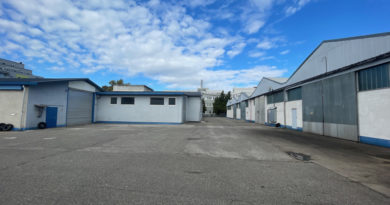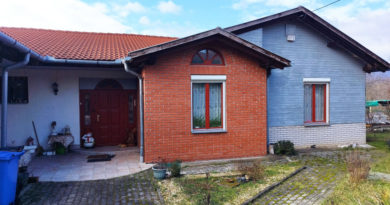Speed of change slows for European commercial property markets in Q4 2010
The pace of adjustment to European commercial property prime yields slowed in the fourth quarter of 2010 (Q4), contrary to larger shifts in prime value measures seen in previous years. Prime yields continued to fall across the region, but the speed of movement has clearly slowed, marking a period of transition for investors of European commercial property, according to CB Richard Ellis (CBRE).
Falls of seven basis points or less were recorded across the office, retail and industrial sectors, according to CBRE’s latest EMEA Rents and Yields Indices. Prime rents remained broadly flat over the fourth quarter of 2010. Against this general background, the office sector stood out, with the largest yield reduction and highest year-on-year rate of rental growth of the three main sectors.
Richard Holberton, Director of EMEA Research at CB Richard Ellis, said: “We have reached a point where investors are assessing the combined impact on future returns of the value gains already made, and the effect of government austerity measures on the shape of any rental recovery. While there is no shortage of capital targeting the real estate market, it remains predominantly risk-averse and focussed on core, prime assets in the most liquid markets.”
In recent years the final quarter has often seen the largest shifts in prime value measures, but not in 2010. In fact the scale of yield change in the market over the past three quarters had been far lower than that seen towards the end of 2009 and the early part of last year. We are still seeing some adjustments in the level of prime yields across European markets, but the scale of the changes is now very slight.”
Yields
Office yields across Europe fell during Q4 2010. The CB Richard Ellis office yield index for the EU-15 fell by seven basis points in the quarter and 35 basis points from the same quarter last year. Twenty-three of the 56 locations in the survey saw downward yield movement, 31 remained unchanged and just two saw an increase. The largest yield reductions were in Bucharest (down 50 basis points to 9%) and in Budapest, Oslo, Bratislava, Barcelona, Madrid and Gothenburg, which all saw yield reductions of 25 basis points. The largest increases were in Thessaloniki and Dubai, where yields rose by 25 basis points to 8.25% and 8.75% respectively.
Retail yields fell during the quarter. The CB Richard Ellis retail yield index for the EU-15 fell by five basis points in the quarter and 26 basis points from the same time last year. Eighteen of the 50 locations saw downward yield movements, 31 remained unchanged and just one saw an increase. The single increase was in Athens where yields rose by 25 basis points to 6.75%. The largest yield reductions of 50 basis points were in Oslo and Bucharest, where yields fell to 5.5% and 10.5% respectively. There were also 25 basis point falls in Paris, Brussels, Budapest and the City of London.
Industrial yields were effectively flat during the quarter. The CB Richard Ellis industrial yield index for the EU-15 fell by just one basis point in the quarter and 21 basis points on the year. Seven of the 47 locations in the survey saw downward yield movements, 40 remained unchanged and there were no upward movements. The largest yield reductions of 25 basis points were in Brussels (down to 7%), Prague (8.5%), Bucharest (10.25%), Edinburgh (7%) and Glasgow (7.25%).
Rents
Prime office rents across Europe increased slightly during Q4 2010. The CB Richard Ellis office rent index for the EU-15 area rose by 0.7% in the quarter, showing a year-on-year increase of 2.7%. Fifteen of the 56 locations in the survey saw increases in the level of prime rent, nine fell and 32 remained unchanged. The largest increases occurred in Kiev, where rents increased by 14% over the quarter to €287 per sq m per annum and Durban where rents increased by 9% to €163 per sq m per annum. The largest falls were in Dublin (down 8.2% to €345 per sq m per annum) and Dubai (down 5.7% to €716 per sq m per annum).
Prime rents in the retail sector increased slightly in the quarter. The CB Richard Ellis retail rent index for the EU-15 rose by 1% in the quarter, but fell by 0.2% over the year. Only nine of the 50 locations in the survey registered an increase, 38 remained unchanged, and three declined. The largest falls were recorded in Edinburgh (down 5% in the quarter to €1,641 per sq m per annum) and Athens (down 3.7% to €1,466 per sq m per annum). The largest increases were in Birmingham, where rents increased by 14% to €1,888 per sq m per annum and Stockholm, up by 4% to €1,336 per sq m per annum.
European industrial rents also saw minimal change in the quarter. The CB Richard Ellis industrial rent index for the EU-15 decreased by 0.1%, taking the year-on-year rate of growth also to -0.1%. Thirty-nine of the 47 locations in the survey saw the prime rent remaining stable, four declined, and four showed an increase. The largest falls were in Lisbon (down 7.9% to €42 per sq m per annum) and Dublin (down 7.3% to €76 per sq m per annum). The largest increases occurred in Istanbul, where rents increased by 9% in the quarter to €53 and in Helsinki, where rents rose by 7.8% to €123 per sq m.
“In Hungary the prime yield has seen some positive inward movement; prime office yield now stands at cca. 7.5% while the retail sector stands at cca. 7.0% demonstrating the sentiment and activity of institutional investors in H2 2010. As there were no income producing industrial transactions the yield remained static at 9.25% in this sector..”-added Tim O’Sullivan, Head of Capital Markets at CB Richard Ellis Budapest.
Note to editors: Analysis based on quarterly monitoring of 56 office markets, 50 retail markets and 47 industrial markets






























